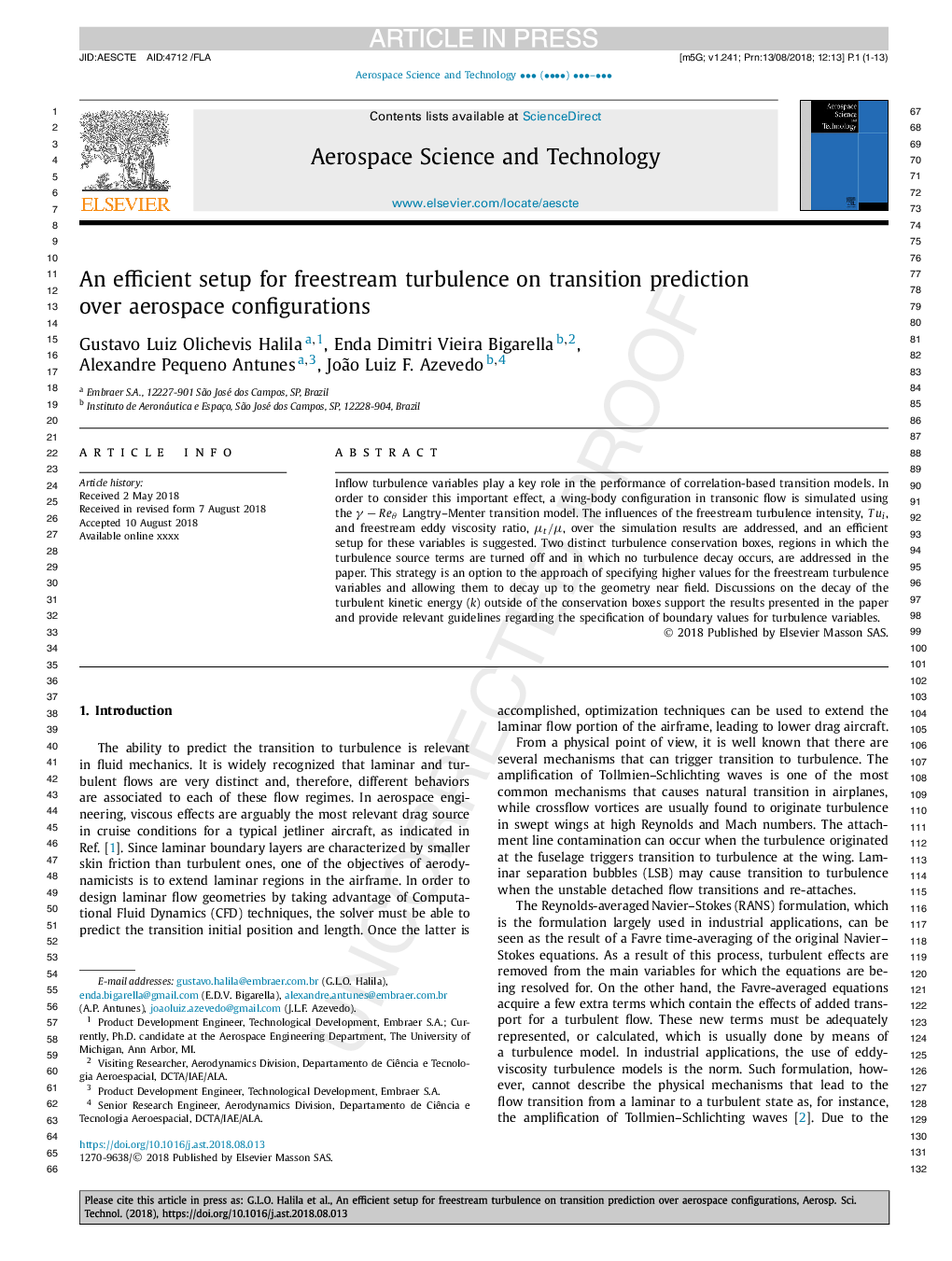| Article ID | Journal | Published Year | Pages | File Type |
|---|---|---|---|---|
| 11007258 | Aerospace Science and Technology | 2018 | 13 Pages |
Abstract
Inflow turbulence variables play a key role in the performance of correlation-based transition models. In order to consider this important effect, a wing-body configuration in transonic flow is simulated using the γâReθ Langtry-Menter transition model. The influences of the freestream turbulence intensity, Tui, and freestream eddy viscosity ratio, μt/μ, over the simulation results are addressed, and an efficient setup for these variables is suggested. Two distinct turbulence conservation boxes, regions in which the turbulence source terms are turned off and in which no turbulence decay occurs, are addressed in the paper. This strategy is an option to the approach of specifying higher values for the freestream turbulence variables and allowing them to decay up to the geometry near field. Discussions on the decay of the turbulent kinetic energy (k) outside of the conservation boxes support the results presented in the paper and provide relevant guidelines regarding the specification of boundary values for turbulence variables.
Related Topics
Physical Sciences and Engineering
Engineering
Aerospace Engineering
Authors
Gustavo Luiz Olichevis Halila, Enda Dimitri Vieira Bigarella, Alexandre Pequeno Antunes, João Luiz F. Azevedo,
